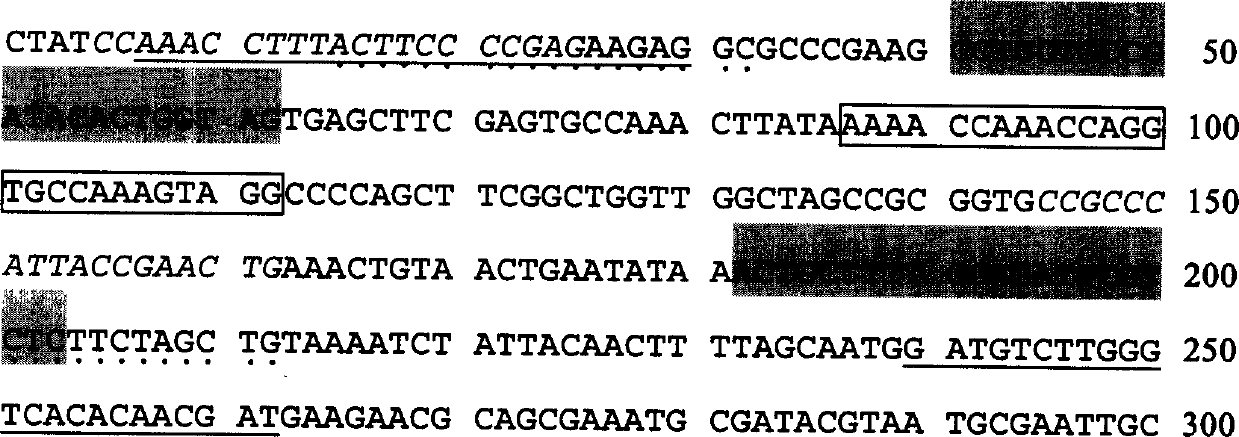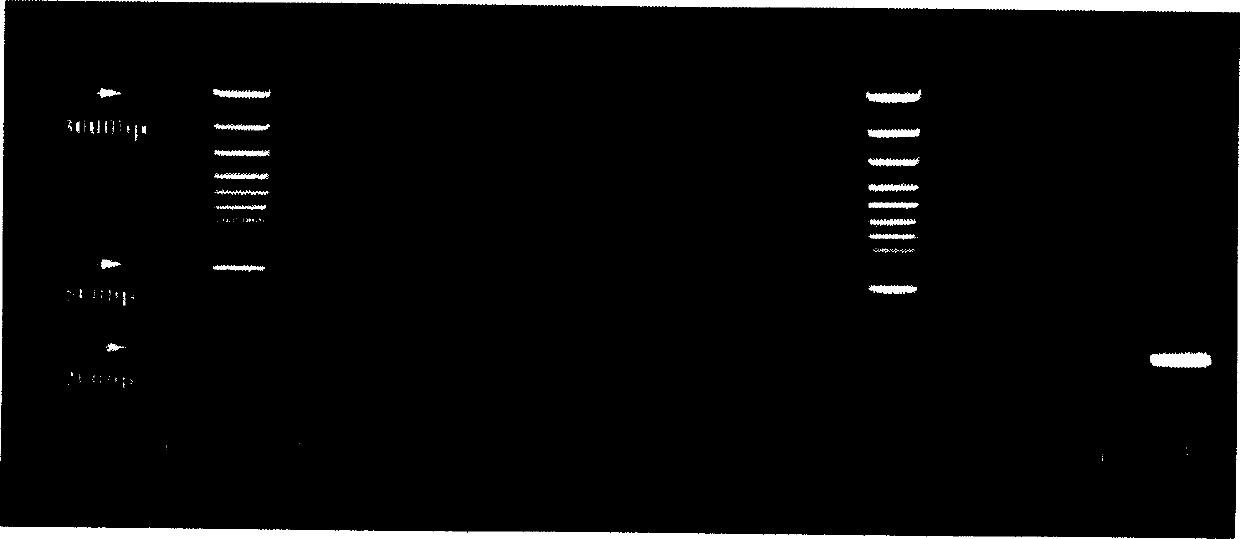Quick quantitative detection of genetic marker of skeletonema costatum japonicum and its method
A technology of genetic markers and sclerophytes, which is applied to biochemical equipment and methods, and microbial measurement/inspection, can solve problems such as heavy workload, time-consuming, and laborious
- Summary
- Abstract
- Description
- Claims
- Application Information
AI Technical Summary
Problems solved by technology
Method used
Image
Examples
Embodiment 1
[0042] Preparation of Genetic Markers for Detection of Skeletons costanum
[0043] The Skeletalum costatum used in the present invention is isolated from natural seawater samples of Jiaozhou Bay. Pure cultures are obtained by repeatedly picking individual algal cells under a microscope. The culture medium used is conventional F / 2 culture medium, and the culture conditions are: the light / dark cycle is 12h / 12h, the light intensity is 4000Lx, and the culture temperature is 22°C-25°C.
[0044] Use a 0.45 μm microporous membrane or centrifuge at 10,000 r / min to collect the cells of Skeletalum costatum in the logarithmic growth phase, and use 200 μl TE buffer (10mmol / L Tris-HCl pH8.0, 1mmol / L EDTA pH8.0 ) to wash about 20 mg of algal body, add 2 times the volume of extraction buffer (3% (w / v) CTAB, 1% (w / v) sodium lauryl sarcosine, 20 mmol / L EDTA, 1.4mol / L NaCl, 0.1mol / LTris-HCl pH8.0, 1% (v / v) 2-mercaptoethanol), 55 ° C for 1 hour, during which time every 10 minutes to mix once;...
Embodiment 2
[0046] Example 2. Design and synthesis of Skeletons costa-specific primer pairs and probes
[0047] By comparing with the sequences of the corresponding regions of all known other eukaryotes and prokaryotes in Genbank, it is found that the sequence shown in SEQ ID NO: 11 is very different from the corresponding sequences of other organisms. The sequence was used as a basis for designing primer pairs for each nucleic acid molecule in Table 1. Based on the nucleotide composition and arrangement of these primer pairs, each primer was synthesized on a commercial DNA synthesizer. Primers 1, 3, 5 and 7 are upstream primers, and primers 2, 4, 6 and 8 are downstream primers.
[0048] Primer
Sequence (5'-3')
SEQ ID NO:
1
AAACCTTTACTTCCCCGAGAAGAG
1
2
GATGTCTTGGGTCACACAACGAT
2
3
CCAAACCTTTACTTCCCCCGAG
3
4
CCGCCCATTACCGAACTG
4
5
ACTTCCCCGAGAAGAGGC
5
6
TGG...
Embodiment 3
[0052] Example 3. Detection of Scutellaria costatum by conventional PCR method
[0053] In this embodiment, several dominant phytoplankton plants commonly seen in Jiaozhou Bay were selected as reference algae, and they are: Chaetoceros spinosa, Chaetoceros fragilis, Chaetoceros slender, Gymnodinosa, Gymnodinosa michaelii, Tamar Alexander Algae, Thalassiosira knowlesi, Pseudomonas spikina, Nitzschia lunster, and Navicula membranous, all of them were isolated from natural seawater of Jiaozhou Bay, and pure cultures were obtained by repeatedly picking individual algal cells under a microscope. These algae were cultured and the DNA of these algae and Skeletalum costatum were extracted according to the method described in Example 1.
[0054] Take 1 μl of DNA extracts from various algae, and perform PCR according to the PCR reaction system described in Example 1, using primers 1 and 2 (SEQ ID NO: 1 and 2) as forward and reverse primers. The PCR program is: 94°C for 3min; 94°C for 3...
PUM
 Login to View More
Login to View More Abstract
Description
Claims
Application Information
 Login to View More
Login to View More - R&D
- Intellectual Property
- Life Sciences
- Materials
- Tech Scout
- Unparalleled Data Quality
- Higher Quality Content
- 60% Fewer Hallucinations
Browse by: Latest US Patents, China's latest patents, Technical Efficacy Thesaurus, Application Domain, Technology Topic, Popular Technical Reports.
© 2025 PatSnap. All rights reserved.Legal|Privacy policy|Modern Slavery Act Transparency Statement|Sitemap|About US| Contact US: help@patsnap.com



